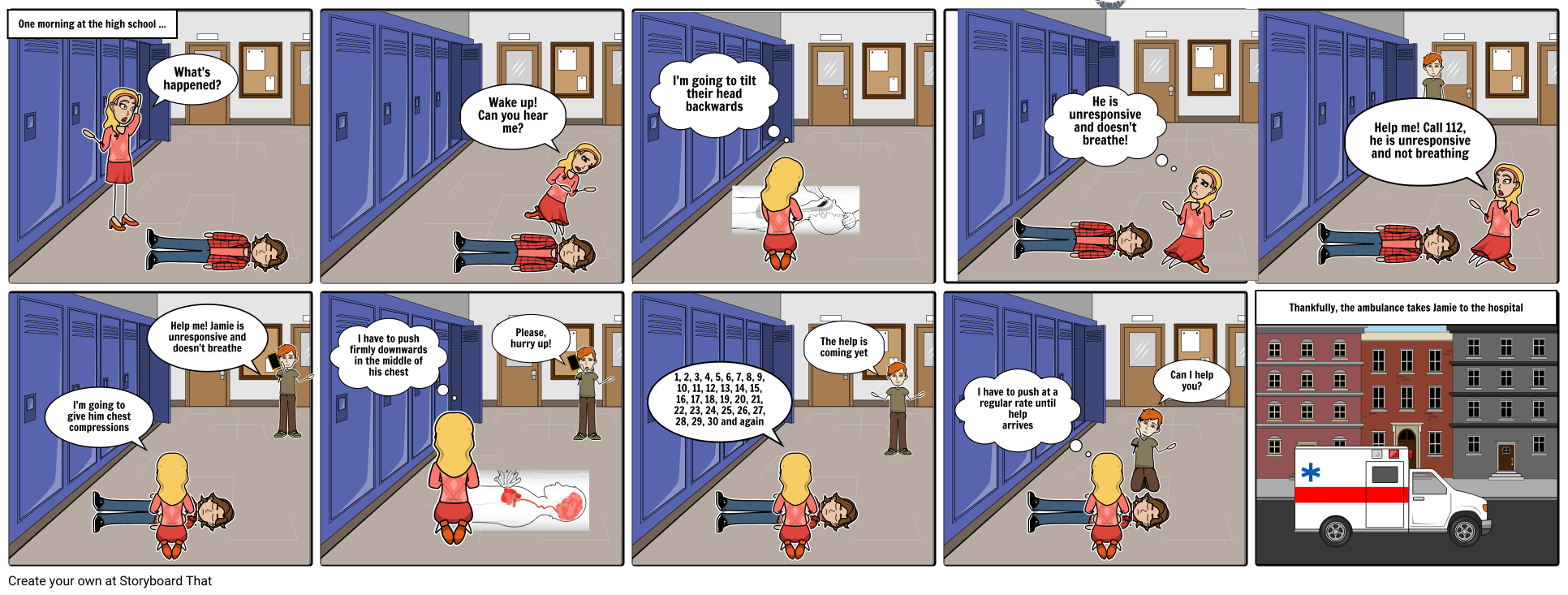AICLE de Alicia Sánchez
domingo, 18 de noviembre de 2018
jueves, 19 de noviembre de 2015
martes, 10 de noviembre de 2015
INTERACTIVE ACTIVITY
Activity 1. Content language. This is a scaffolding activity related to prepositions.
CLIL DIDACTIC UNIT
 La
unidad AICLE que os presento es la “Unit 1. An
emergency service dispatcher” correspondiente al
Módulo de Teleemergencias que se imparte en el 2º curso del CFGM de
Emergencias Sanitarias.
La
unidad AICLE que os presento es la “Unit 1. An
emergency service dispatcher” correspondiente al
Módulo de Teleemergencias que se imparte en el 2º curso del CFGM de
Emergencias Sanitarias.
A
continuación os indico los objetivos generales de la unidad y cuáles
son el vocabulario y las estructuras gramaticales necesarias para
trabajar la L2.

Template to design a CLIL didactic unit
Subject:. Teleemergencies Teacher: Alicia Sánchez Ortiz
The title of Unit 1. An emergency service dispatcher
Subject:. Teleemergencies Teacher: Alicia Sánchez Ortiz
The title of Unit 1. An emergency service dispatcher
Course / Level 2nd CFGM Emergency Health Care
| 1.
Learning outcomes / Evaluation criteria |
|
| 2. Subject Content |
The
goal of this unit is to familiarize you with the different types
of Emergency Control Centres or Public Safety Answering Points
(PSAPs). Through a study of the various roles that the emergency
staff must fulfill. The dispatcher is the centre of radio
communication.
|
| 3. Language Content / Communication | |
Vocabulary
|
|
Structures
|
|
| Discourse type / Language skills | Reading, speaking, listening, writing and interact. |
4.
Contextual (cultural) element
|
To
know how work pre-hospital emergency health
systems in case of an emergency or urgency situation.
|
5.
Cognitive (thinking) processes
|
Read,
listen to, understand, compare, analyse, write, identify, connect,
summarize, assess.
|
6.
(a) Task(s)
|
|
6.
(b) Activities
|
Reading
the texts.
Activities
(Worksheets):
Introductory
(warm activities): discussion groups.
Answer
questions with simple sentences or yes/no answers.
Listening
activities.
A
bingo game.
A
card game.
Use
drawings to label specific vocabulary.
Matching
activities.
True
or false activities.
Filling
in the gaps sentences.
Crosswords.
Circling
and ticking activities.
Frame
activities (sentences maker).
Searching
synonyms in texts.
Putting
in order.
Final
test: multiple choice questions.
|
7.
Methodology
|
|
Organizations
and class distribution / Timing
|
The
methodology will be active and participatory; in addition, it must
facilitate both individual and group learning.
The
methodology will be applied through the establishment of work
habits, including completing the teacher's activities.
Timing:
3 sessions per week during 3 weeks.
|
Resources
/ Materials
|
Activities
designed by the teacher and given to the students in pdf. Aditional resources: Professional telecommunicators http://www.local4260.com/ http://www.911interpreters.com/911interpreters_sample_call.mp3 Emergency vocabulary http://www.reepworld.org/englishpractice/health/emergencies/index.htm Medical English vocabulary http://www.englishexercises.org/makeagame/viewgame.asp?id=4772 Vídeos: Meet "Disaster" and "Preparedness": Part 1 Vídeos: Meet "Disaster" and "Preparedness": Part 2 |
Key
Competencies
|
Specific
basic competencies that will be practiced: linguistic,
mathematical, social, digital, cultural, learn to learn, autonomy,
etc.
|
8.
Evaluation (criteria and instruments)
|
|
miércoles, 4 de noviembre de 2015
THE SKELETAL SYSTEM
Description:
7 Active Technology Solutions Pvt.Ltd. is an
http://www.teachertube.com/video/skeletal-system-313556
Emergency Medical Technician Preparatory Anatomy Physiology - Skeletal System - See more at: http://www.teachertube.com/video/emergency-medical-technician-preparatory-anatomy-physiology-skeletal-system-386881#sthash.sa7IDB1b.dpuf
Description:
An overview by Jim Becka, NCHS teacher, paramedic. http://emtworkbook.com
domingo, 25 de octubre de 2015
COMPARTIR RECURSO AICLE
Es una web en la que se puede interactuar y conocer con detalle la anatomía humana en inglés. Incluye los aparatos y sistemas del cuerpo humano. También permite conocer como se pronuncian cada uno de sus componentes. Es una herramienta útil para la asignatura de “science” tanto en enseñanza primaria, secundaria como en bachillerato y en aquellos ciclos formativos que traten temas relacionados con el cuerpo humano.
martes, 20 de octubre de 2015
MI WEBMIX EN SYMBALOO
A continuación, os presento mi webmix en el siguiente enlace: http://www.symbaloo.com/mix/reaaicle-aliciasanchez
Acerca de este webmix : AICLE, emergency, health
Mi webmix hace referencia a cuatro bloques de contenidos relacionados con el campo sanitario:
- ZONA MORADA (margen superior izquierdo): herramientas de autoayuda en inglés, recursos para utilizar en el aula, problemas de pronunciación, etc.
- ZONA VERDE (margen superior derecho): materiales específicos en inglés del CFGM de Emergencias Sanitarias, vídeos y enlace a la Cruz Roja británica.
- ZONA AZUL (margen inferior izquierdo): más materiales en inglés, Merlot, Open Education Consortium y Big Picture.
- ZONA AMARILLA (margen inferior derecho): materiales AICLE y CLIL, de diferentes áreas y de ciencias.
Considero que esta webmix es interesante para recopilar y organizar los marcadores que he considerado más interesantes, en mi campo profesional. Es una herramienta muy visual, lo que facilita su rápida localización y resultan muy prácticos a la hora de comenzar a realizar unidades didácticas en L2, siguiendo la metodología AICLE O CLIL.
- ZONA MORADA (margen superior izquierdo): herramientas de autoayuda en inglés, recursos para utilizar en el aula, problemas de pronunciación, etc.
- ZONA VERDE (margen superior derecho): materiales específicos en inglés del CFGM de Emergencias Sanitarias, vídeos y enlace a la Cruz Roja británica.
- ZONA AZUL (margen inferior izquierdo): más materiales en inglés, Merlot, Open Education Consortium y Big Picture.
- ZONA AMARILLA (margen inferior derecho): materiales AICLE y CLIL, de diferentes áreas y de ciencias.
Considero que esta webmix es interesante para recopilar y organizar los marcadores que he considerado más interesantes, en mi campo profesional. Es una herramienta muy visual, lo que facilita su rápida localización y resultan muy prácticos a la hora de comenzar a realizar unidades didácticas en L2, siguiendo la metodología AICLE O CLIL.
Suscribirse a:
Entradas (Atom)

